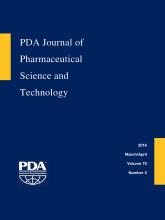Abstract
Burkholderia cepacia has recently received a considerable attention as one of the major risks in susceptible pharmaceutical products. This microorganism can easily propagate and cause vast and severe contamination, especially to the water supplies for pharmaceutical companies. Moreover, it proliferates within the products and can cause severe infections for humans. Therefore, fast and sensitive detection of these bacteria is of a great demand. The present study introduces improved application of a polymerase chain reaction assay with relatively high sensitivity and specificity for the direct detection of B. cepacia from the aqueous pharmaceutical products. A semi-nested polymerase chain reaction approach using the primer set BCR1/BCR2 followed by BCR1/Mr yielding a 465 bp fragment of the recA gene was applied and tested using both crude lysate from isolated colonies and DNA directly extracted from artificially prepared and spiked reference syrup. The polymerase chain reaction assay showed no interference with other bacterial reference and environmental strains tested, including Staphylococcus aureus ATCC® 6538, Pseudomonas aeruginosa ATCC® 9027, Escherichia coli ATCC® 8739, Salmonella abony NCTC® 6017, Bacillus subtilis ATCC® 6633, Micrococcus luteus, Staphylococcus warneri, Pseudomonas fluorescens, Pseudomonas putida, and Ralstonia pickettii. Moreover, this semi-nested assay showed a detection limit of around 10 colony-forming units per sample and could detect B. cepacia strains isolated from a municipal pre-treated potable water tank. Comparing the results for detection of B. cepacia in 100 randomly collected commercial syrup preparations using both conventional standard method and polymerase chain reaction assay revealed that B. cepacia was detected in two samples using polymerase chain reaction assay while all samples showed negative results by conventional culturing and biochemical methods. These results highlight the advantage of using this polymerase chain reaction assay to detect B. cepacia in contaminated pharmaceutical products and even water for pharmaceutical purposes, without the need of culturing or pre-enrichment, where it may give false-negative results and may be misidentified when biochemically tested.
- B. cepacia
- Susceptible pharmaceutical products
- Semi-nested polymerase chain reaction
- conventional culturing
- Biochemical methods
- © PDA, Inc. 2016
PDA members receive access to all articles published in the current year and previous volume year. Institutional subscribers received access to all content. Log in below to receive access to this article if you are either of these.
If you are neither or you are a PDA member trying to access an article outside of your membership license, then you must purchase access to this article (below). If you do not have a username or password for JPST, you will be required to create an account prior to purchasing.
Full issue PDFs are for PDA members only.
Note to pda.org users
The PDA and PDA bookstore websites (www.pda.org and www.pda.org/bookstore) are separate websites from the PDA JPST website. When you first join PDA, your initial UserID and Password are sent to HighWirePress to create your PDA JPST account. Subsequent UserrID and Password changes required at the PDA websites will not pass on to PDA JPST and vice versa. If you forget your PDA JPST UserID and/or Password, you can request help to retrieve UserID and reset Password below.






